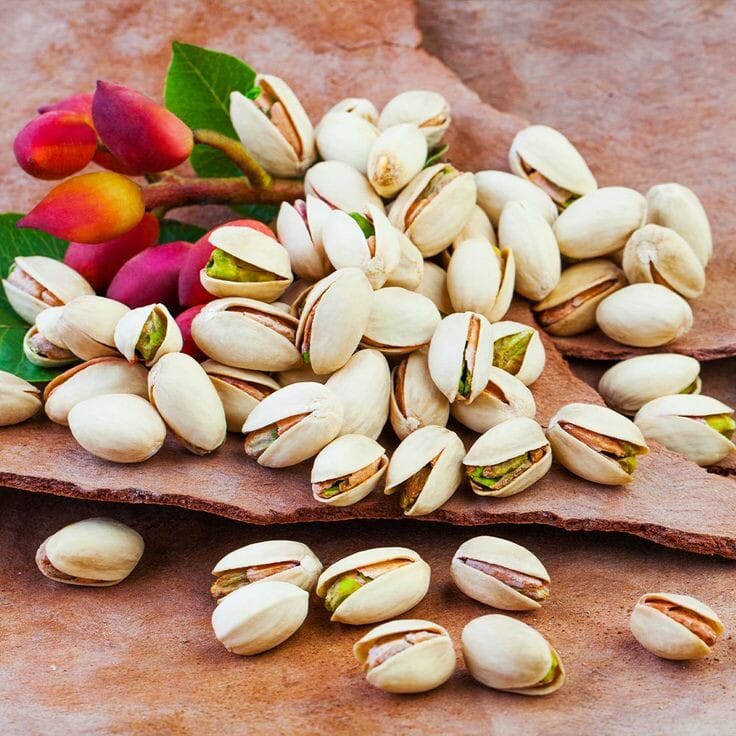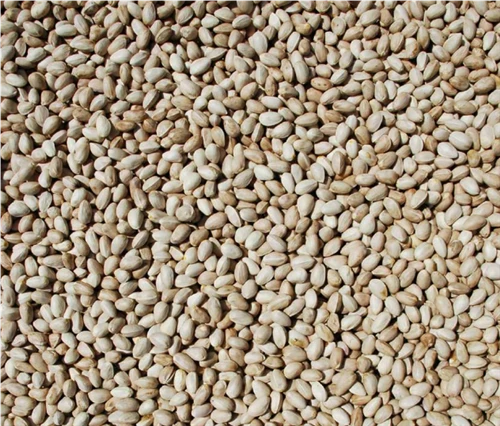
To date, we have essentially practiced two types of pistachio harvesting: harvesting ripe pistachios to achieve maximum kernel filling and smiling, and harvesting unripe or raw pistachios for green kernel production. However, with the evolving industrial and new consumption needs of the pistachio kernel market, it may be time to add a new harvesting model to the existing ones.
Historically, the main pattern of consumption and demand was for smiling pistachios as a snack. It was common practice to harvest the crop at the latest possible time, in late September or early October, to ensure maximum smiling percentage. Closed-shell pistachios were mechanically cracked or processed into kernels. In recent years, with the rise in global demand for pistachio kernels, cracking open smiling pistachios has also become economically justifiable.

About 30 years ago, when the green pistachio kernel market began to develop, pistachios were harvested unripe to achieve greener kernels. The kernel-filling process starts in early July and continues until late September. Empirically, the best time for raw harvesting is when about 5% of the pistachios have ripened or even started to smile, which typically occurs in late August and early September. The longer the delay beyond this time frame and the higher the percentage of ripened pistachios, the fuller the kernels become, but the green color of the kernel shifts towards yellow, reducing the quality of the raw kernel. In recent years, with the increase in global pistachio production, the consumption patterns of pistachios have shifted, and pistachio kernels are now widely used in the food industry. The rise in global consumption and demand for pistachio kernels has been so significant that in the past two to three years, despite the decline in the global price of pistachios due to increased supply, domestic prices for Iranian pistachios have not dropped significantly. This is largely due to high global demand for pistachio kernels, limited supply from competitors, and Iran's competitive advantages in producing pistachio kernels.
It seems that the current global pistachio market conditions and the diverse applications of pistachio kernels in the food industry could lead to another shift in the pistachio harvesting pattern in Iran. Just as the market and demand for green kernels led to the development of the raw pistachio harvesting pattern, the growing demand for pistachio kernels may pave the way for a closed-shell harvesting pattern. According to this model, pistachios would be harvested after the kernel-filling process is complete, ensuring the shell is fully filled with the kernel, but before the shell naturally splits open. In other words, instead of the majority of pistachios being raw or smiling, the majority would remain closed-shell at the time of harvest. This harvesting model offers several advantages, as outlined below:
Reducing the Risk of Aflatoxin Contamination
As experience has shown, early harvesting before the shell splits reduces the risk of Aspergillus mold penetration, which is the main producer of aflatoxin. This advantage is also present in raw pistachio harvesting.
Shortening the Growth or Kernel-Filling Period
As all orchard owners know from experience, the trees undergo significant stress and nutrient depletion during the fruit ripening period. With this harvesting model, the trees are relieved about three weeks earlier, giving them more time to recover and prepare for the following year’s production.
Simplifying the Pistachio Processing Procedure
In this model, pistachios are simply peeled after harvesting and air-dried on a cement field under sunlight for 3 to 5 days. They do not undergo washing or mechanical drying processes. This advantage reduces water and energy consumption, as well as processing costs. Additionally, avoiding water washing provides two benefits for the final product:
- It lowers the risk of aflatoxin contamination since no extra moisture is introduced to the pistachios.
- The pistachio kernels achieve higher quality in terms of both color and texture because they are not exposed to excess moisture or unnatural dryer heat.
Reducing the Guarding Period and Associated Costs
Naturally, harvesting pistachios three weeks earlier reduces orchard guarding costs as well.
Powered by Froala Editor
Powered by Froala Editor